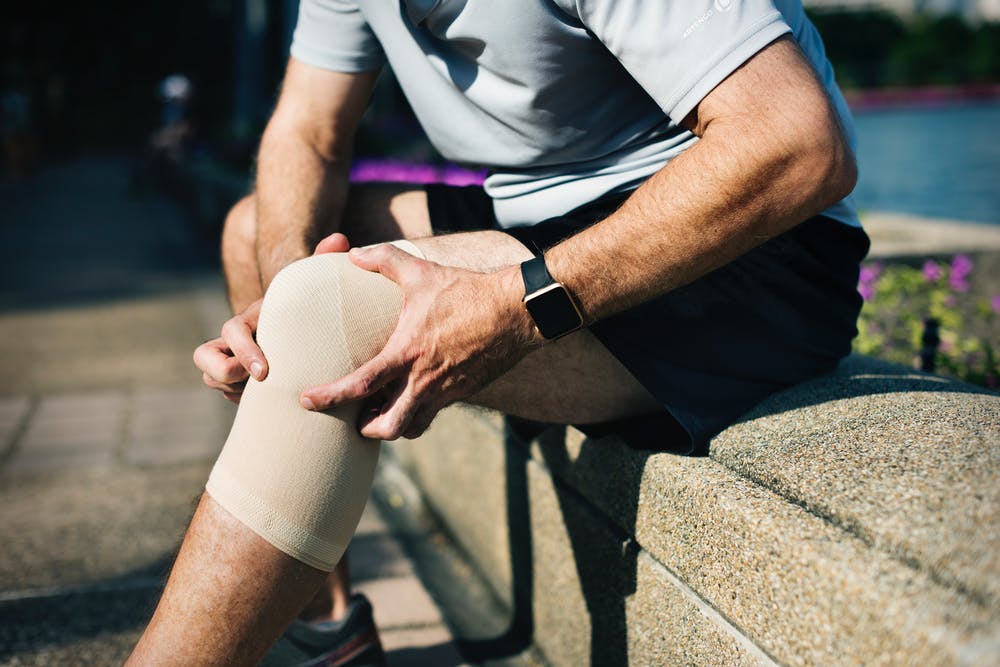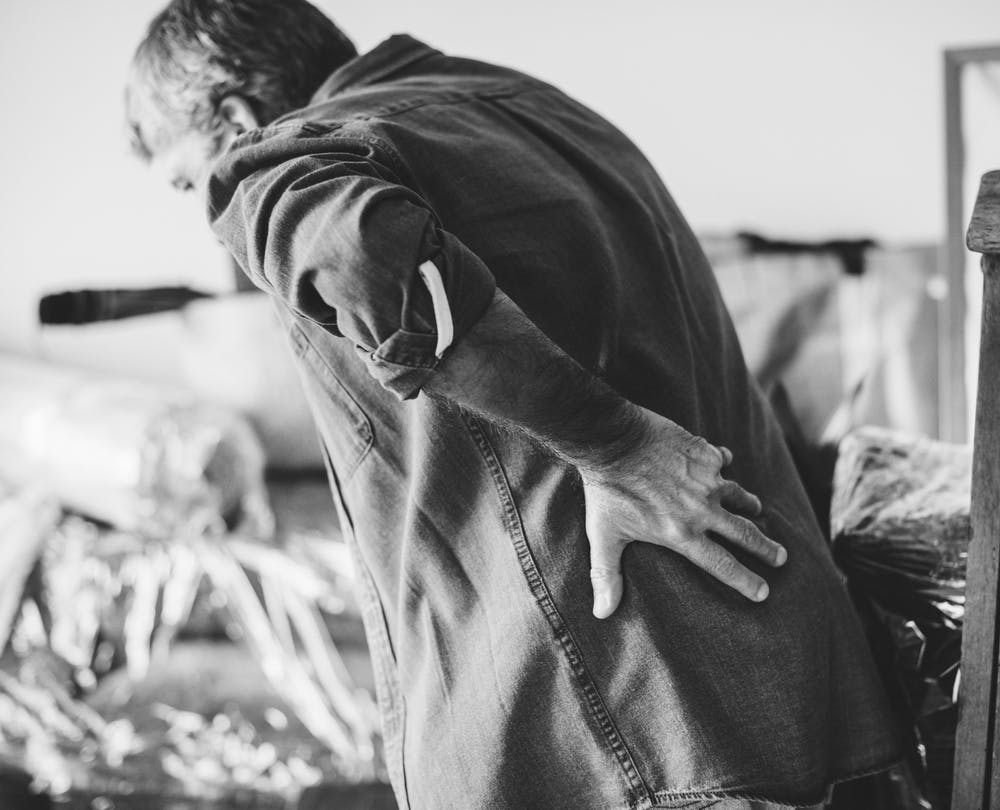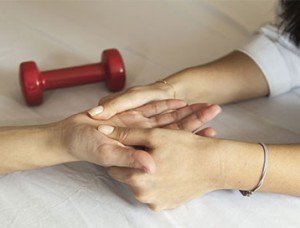|
BOOK NOW |
ASK ABOUT YOUR PAIN |
Home > Blog > Physiotherapy & Hand Therapy > Conditions > Arthritis Pain Physiotherapy
Arthritis Pain Physiotherapy

Arthritis pain refers to a specific pain that patients with arthritis experiences and suffers from. "Arthritis" simply refers to joint inflammation, which is a form of joint disorder that causes inflammation of one or more joints, causing pain in joints.
Arthritis related pain is primarily joint pain, and is the major complaint of individuals with arthritis. Pain is often recurring and constant, and usually very localized to the affected joint only. Pain as a result of arthritis is caused by the inflammation around the joint, damage to the joint from diseases, the daily wear and tear within the joint, muscle strained from forceful movements across or against stiff, painful and fatigued joints.
There are more than 100 different sub types of arthritic groups, but the most common one is osteoarthritis (a form of degenerative joint disease, aggravated by wear and tear) which is a result of direct or indirect trauma to the joint, infection to the joint, or as a result of repetitive trauma or injury. Other forms of arthritis are rheumatoid arthritis, psoriasis related arthritis, and other related autoimmune diseases.
Osteoarthritis affects more than 3.8% of people while rheumatoid arthritis affects about 0.24% of people. Gout/gouty arthritis affects about 1–2% of the Western population at some point in their lives. In Australia about 15% of people are affected, while in the United States more than 20% have a type of arthritis. Overall the disease becomes more common with age. Arthritis is a common reason that people miss work and can result in a decreased quality of life.
signs and symptoms of arthritis
Pain, which can vary in severity, is a common symptom in virtually all types of arthritis. Other symptoms include swelling, joint stiffness and aching around the joint(s). Arthritic disorders like lupus and rheumatoid arthritis can affect other organs in the body, leading to a variety of symptoms.
Symptoms may include:
- Inability to use the hand or walk
- Stiffness, which may be worse in the morning, or after use
- Malaise and fatigue
- Weight loss
- Poor sleep
- Muscle aches and pains
- Tenderness
- Difficulty moving the painful affected joint
It is common in advanced arthritis for significant secondary changes to occur. For example, arthritic symptoms might make it difficult for a person to move around and/or exercise, which can lead to secondary effects, such as:
- Muscle weakness
- Loss of flexibility
- Decreased aerobic fitness
These changes, in addition to the primary symptoms, can have a huge impact on quality of life.
disability due to arthritis

Arthritis is the most common cause of disability in the United States. More than 20 million individuals with arthritis have severe limitations in function on a daily basis. Absenteeism and frequent visits to the physician, physiotherapy and hand therapy are common in individuals who have arthritis.
Arthritis can make it very life, work and responsibilities difficult for individuals to be physically active and patients can become home bound, depending on pain experienced, arthritic-related joint and soft tissue changes.
It is estimated that the total cost of arthritis cases is close to $100 billion of which almost 50% is from lost earnings. Each year, arthritis results in nearly 1 million hospitalizations and close to 45 million outpatient visits to health care centers.
Decreased mobility, in combination with the above symptoms, can make it difficult for an individual to remain physically active, contributing to an increased risk of obesity, high cholesterol or vulnerability to heart disease.
People with arthritis are also at increased risk of depression, which may be a response to numerous factors, including fear of worsening symptoms.
arthritis diagnosis
Diagnosis is made by clinical examination from an appropriate health professional, and may be supported by other tests such as radiology and blood tests, depending on the type of suspected arthritis.
All arthritides potentially feature pain.
Pain patterns may differ depending on the arthritides and the location. Rheumatoid arthritis is generally worse in the morning and associated with stiffness lasting over 30 minutes. However, in the early stages, patients may have no symptoms after a warm shower.
Osteoarthritis, on the other hand, tends to be associated with morning stiffness which eases relatively quickly with movement and exercise. In the aged and children, pain might not be the main presenting feature; the aged patient simply moves less, the infantile patient refuses to use the affected limb.
Elements of the history of the disorder guide diagnosis. Important features are speed and time of onset, pattern of joint involvement, symmetry of symptoms, early morning stiffness, tenderness, gelling or locking with inactivity, aggravating and relieving factors, and other systemic symptoms.
Physical examination may confirm the diagnosis, or may indicate systemic disease. Radiographs are often used to follow progression or help assess severity.
Blood tests and X-rays of the affected joints often are performed to make the diagnosis. Screening blood tests are indicated if certain arthritides are suspected.
These might include:
- rheumatoid factor
- antinuclear factor (ANF)
- extractable nuclear antigen and
- specific antibodies
physiotherapy and hand therapy for arthritis

Research studies have shown that physical exercise of the affected joint can noticeably improve long-term pain relief. Furthermore, exercise of the arthritic joint is encouraged to maintain the health of the particular joint and the overall body of the person.
Individuals with arthritis can benefit from both physiotherapy and hand therapy. In arthritis the joints become stiff and the range of movement can be limited. Physical therapy has been shown to significantly improve function, decrease pain, and delay need for surgical intervention in early to advanced arthritic cases.
Exercise prescribed by a physiotherapist has been shown to be more effective than medications in treating osteoarthritis of the knee. Exercise often focuses on improving muscle strength, endurance and flexibility.
Physiotherapy intervention includes
- decreasing and managing ongoing pain and inflammation with cold therapy
- ultrasound therapy to accelerate the healing process
- joint and soft tissue movement and range of motion
- muscle strengthening of the affected joints and the muscles around it
- prescribe any walking aids if necessary and train how to use them safely and effectively
- prescribe customized finger, hand or foot splints